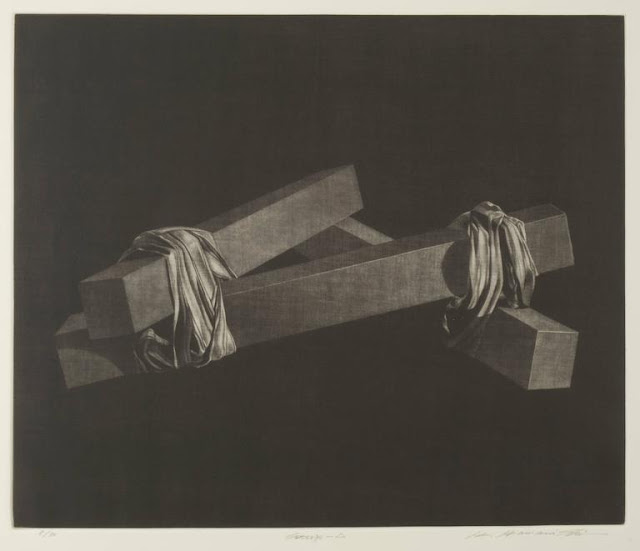Linoleum as a material for printmaking has been used for nearly a hundred years now. Normally, you cut an image out using special gouges similar to woodcut tools, cutting away the lino around the image you want to print. This is called relief printmaking, because if you look at the block from the side, the material that remains stands up in relief from the backing material. You then roll ink with a brayer over the surface of the block, place paper over it, and either print by hand or run it through a press. You can do complex things this way (for example, reduction linocuts), but the beauty of the process is that it is quick, simple, and direct. Incised lino block, from me.redith.com Etched lino block, from Steve Edwards A few years ago, I saw some prints that were classified as coming from etched linoleum blocks, and I loved the textures I saw in them. In the last few months, I've been trying to use this technique in my own studio, learning about it as one does these d...


